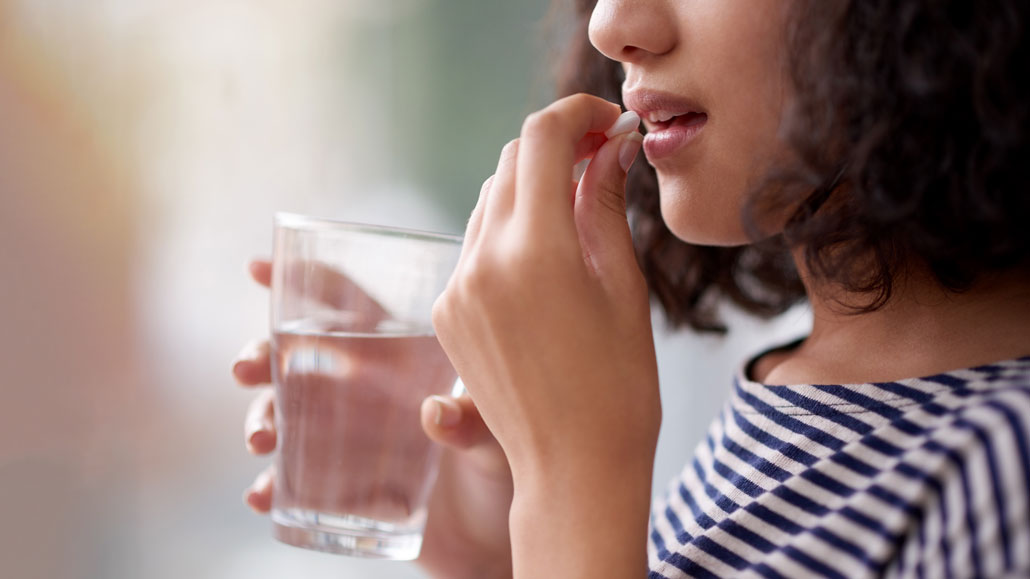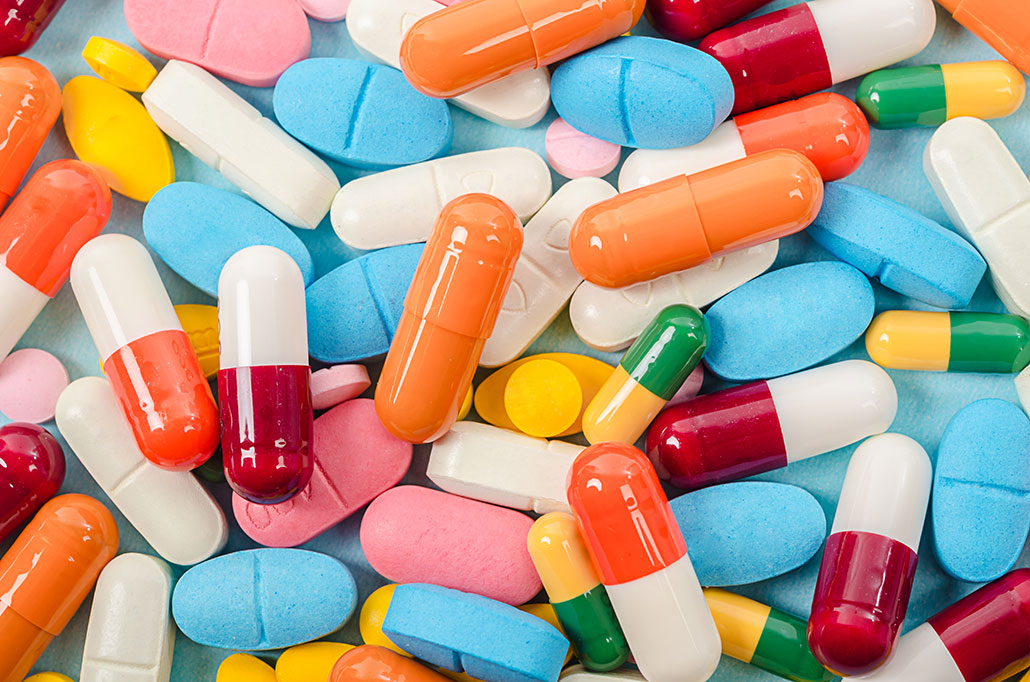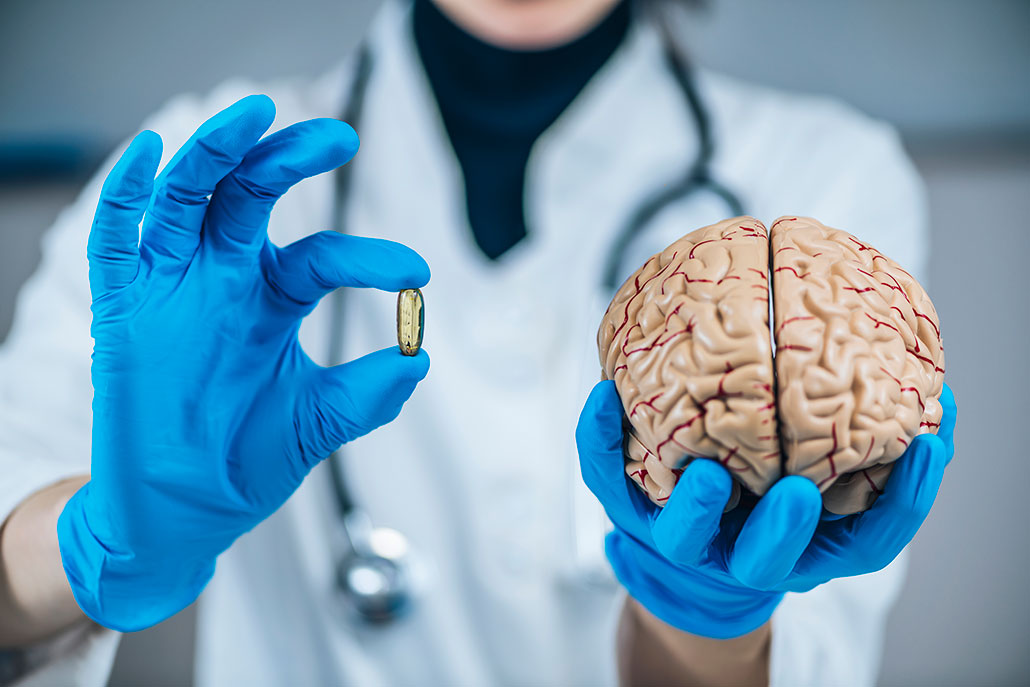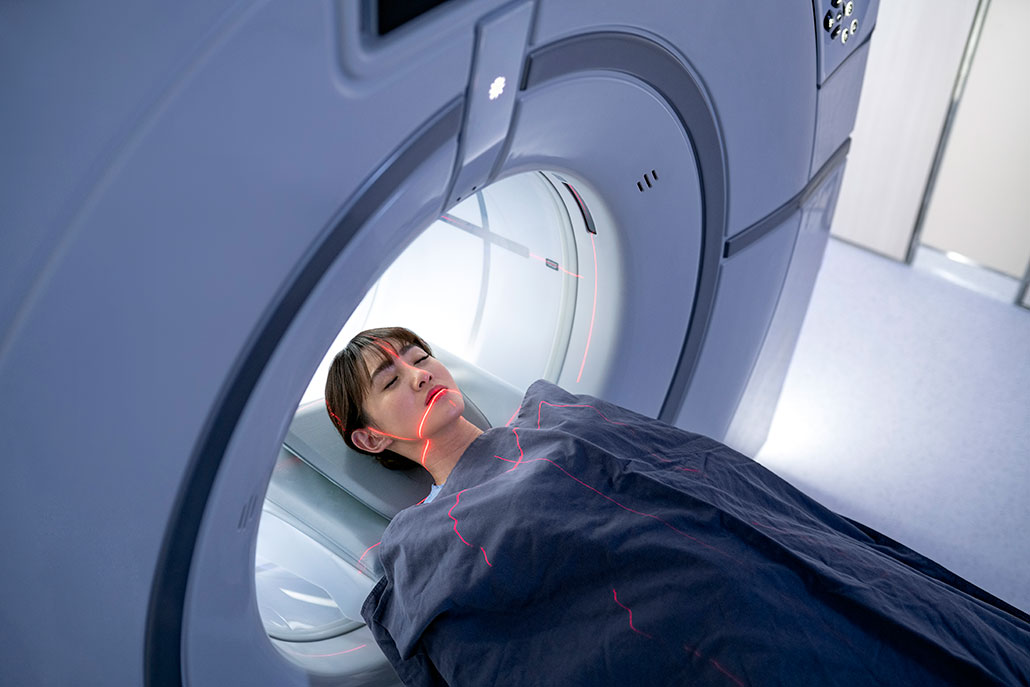Discovering the power of placebos
Even a pill that contains no medicine can sometimes make you feel better

You know taking medicine can help you feel better. But what if you take a pill that has no medicine in it? Sometimes that can make you feel better, too, thanks to something called the placebo effect.
Tassii/E+/Getty Images Plus
Owww! A little girl wails after falling and bumping her knee. Her father rushes over and inspects the leg. “I’ll kiss it and make it better,” he says. The kiss works. The girl sniffles, wipes her eyes, then jumps up and gets back to playing. Her pain is forgotten.
Scenes like this one happen on playgrounds and in homes around the world every day. When a child gets a bump or bruise in Germany, says Ulrike Bingel, “someone will blow the pain away.” Bingel is a doctor and neuroscientist at the University of Duisburg-Essen in Germany.
A caring adult can seemingly stop a child’s pain with a puff of air, a kiss or even just a few kind words. Of course, none of these things can repair injured skin. So what’s happening? Doctors call it the placebo (Pluh-SEE-boh) effect. It describes what happens when something that should have no effect triggers a real, positive change in someone’s body.
Placebos are a very important part of medical research. To prove that a new medicine works, researchers must show that people taking it improve more than do people getting a placebo. This placebo is usually a pill that looks the same as the treatment but contains no medicine. At times a person may feel better after taking a placebo pill, even though the pill did not act on any disease or symptoms.
This placebo response isn’t an illusion. It comes from the brain. A placebo effect can only influence body processes that the brain can modify, such as pain or digestion.
Kathryn Hall is a medical researcher at Brigham and Women’s Hospital in Boston, Mass. “Placebos don’t do anything for bacteria,” she says. “Placebos can’t fight cancer. They can’t fight viruses.” But they can change how strongly someone experiences pain or other symptoms. Hall, Bingel and their teams are working to better understand what brain processes make this happen.
Other researchers are trying to figure out why the placebo effect works. Ted Kaptchuk directs the Program in Placebo Studies and the Therapeutic Encounter. It’s at Beth Israel Deaconess Medical Center in Boston, Mass. His group has discovered that placebo treatments work better when a doctor spends more quality time with a patient. Most baffling of all, their research has shown that a placebo can work even when the person taking it knows that it’s not a real drug.

Educators and Parents, Sign Up for The Cheat Sheet
Weekly updates to help you use Science News Explores in the learning environment
Thank you for signing up!
There was a problem signing you up.
No tricks to this treatment
For a long time, doctors had thought that a patient must believe that a placebo is a real drug for it to have an effect. (That magic kiss on the knee doesn’t work quite as well on a teenager, who no longer believes in such things.) If a person expects a treatment to work, it often does. The opposite also is true. When someone expects or believes that a treatment will hurt or fail, they may experience a bad outcome, even when they hadn’t received the true treatment. That’s known as a nocebo (No-SEE-boh) effect.
Expectations matter
In a recent study, athletes who rinsed their mouths with a pink solution ran farther and faster than those who rinsed with a clear liquid. Both liquids had the same number of calories and sweeteners. The athletes had been told the pink rinse would boost their energy — and it did.
Researchers who test new medicines try to make sure everyone involved has the same expectations. They do this by setting up a double-blind clinical trial. Volunteers get chosen randomly to take either some real medicine or a fake mimic. The doctors and volunteers don’t find out who was taking what — until after the trial is over. If the group that took the real medicine improves more than those that took the placebo, then the true medicine must be having a meaningful effect.
It seemed you had to trick the patient for the placebo effect to work. Kaptchuk wondered if that was true. To his surprise, no one had tested the idea. So starting in 2010, he ran a series of pilot trials investigating open-label placebos. These are placebos that both the doctor and patient know about.
Each trial involved a different medical condition. The team selected conditions that typically show strong placebo effects in clinical trials. One was irritable bowel syndrome (IBS). People with this disorder experience frequent bouts of diarrhea or constipation. Many also suffer a lot of gut pain. Other trials involved chronic back pain and cancer-related fatigue. In that last one, patients feel overwhelmingly tired as a side effect of their cancer or their cancer treatment.
In each trial, half of the participants followed their usual treatment routine for their condition. The other half added a placebo pill. A doctor met with each patient and explained that the placebo was a pill filled with cellulose, a substance that has no effect on the body. They also explained that in typical clinical trials, many patients with this condition got better on placebos. And they said that no one had ever tested what happens if the patient knows about the placebo.
“Patients often think of it as ridiculous and crazy and wonder why they’re going to do it,” Kaptchuk said in a 2018 podcast. He knew that the open-label placebo wouldn’t cure anyone. But he hoped it might help some people feel better.
And it did.
Patients who took open-label placebos reported more improvements than those who didn’t. When Bingel heard about these results, she remembers thinking, “That’s crazy! It’s too good to be true.”

But then she set up her own study. Her team worked with 127 people who had chronic back pain. Much to her surprise, open-label placebos worked to relieve symptoms in these people, too. Compared with patients who had no change in treatment, patients on the placebo reported less pain. They also had less difficulty with daily routines and felt less depressed about their condition.
The range of motion for their backs did not change, however. They had not been cured. They just felt better. Her team shared its findings in the December 2019 issue of the journal Pain.
Meanwhile, Kaptchuk’s team had set up a much larger trial. It included 262 adults with IBS. Anthony Lembo co-led this study at Beth Israel Deaconess Medical Center. As a gastroenterologist in Boston, Lembo is a doctor who specializes in the gut. His team met with the patients to explain the study. All patients continued to get their typical IBS treatment. One group did nothing more than that. A second group added the open-label placebo. A third group took part in a typical double-blind trial. In this group, no one knew during the trial who was getting a placebo versus peppermint oil. Peppermint oil is an active substance that can help relieve IBS symptoms.
The researchers had them fill out a survey about their expectations. A lot of the patients were skeptical, says Lembo. Many thought the placebos would do nothing. In the end, “it didn’t really matter whether you doubted the process,” says Lembo. The skeptics were just as likely to improve on the open-label placebo as anyone else.
Almost half of the patients who received the open-label placebo experienced much milder symptoms than usual. A similar portion of patients who received the double-blinded placebo also improved. Only about one third of the group that continued typical treatment experienced this level of relief. It didn’t matter if the placebo was disguised or not. The results appeared this spring in the February 12 Pain.
Some of those who participated “wanted to continue the placebo,” says Lembo. That’s tricky because he can’t yet prescribe an open-label placebo. These are specially made in a research pharmacy. It’s important to make sure the pill really isn’t active.
“We can’t just hand it out like a TicTac [mint] or something,” says John Kelley. He’s a psychologist who works with Lembo and Kaptchuk in the placebo studies program. Soon, however, the team hopes to recruit doctors to help them test prescriptions of open-label placebos for IBS or other similar conditions in the real world.
The brain and pain
The biggest barrier to making placebos a part of treatment is convincing other doctors that it’s a good idea, says Lembo. “We’re trained in medical school to give active drugs,” he explains. Placebos don’t have any active ingredients. They can, however, trigger the brain to do some pretty cool things.
During a placebo response to pain, the brain releases pain-relieving chemicals called endorphins (En-DOR-fins). If researchers give someone a drug that stops these chemicals from doing their job, a placebo can’t reduce pain. The placebo response also causes the brain to release dopamine (DOAP-uh-meen). This chemical is involved whenever your brain has been led to expect a reward. It also can cut your sensitivity to pain.
Pain is a complex experience. It begins with signals that travel on nerves through the spine and up to the brain. Stronger signals from the body generally equal more pain. But other factors can alter how someone feels pain. If you’re bored and lonely and a mosquito bites you, the bite will itch and hurt. But if that same bite happens while watching Star Wars, you’re so distracted that “you will probably not even notice,” says Bingel. The stress of a sports match or dangerous situation can sometimes lessen pain, too.

Tor Wager is a neuroscientist at Dartmouth College in Hanover, N.H. He and Bingel wanted to know how deeply the placebo effect extends into the brain’s pain system. In 2021, they analyzed data from 20 different reports. Each study had scanned people’s brains as they experienced a placebo effect.
Placebos can deaden pain signals coming from the nerves, they learned. For some people, it’s as if the brain is “turning off the tap,” says Wager. Most of the action, he says, seems to happen within the brain systems that manage motivation and reward.
These are the systems that manage your belief about your pain.
Placebos don’t activate the brain equally in all people. Figuring out why is the focus of Hall’s research at Brigham and Women’s Hospital. Some genes make people more or less likely to respond to placebo treatment, her research shows. One gene produces substances that help control levels of dopamine in the brain. People with a certain variant of this gene respond more strongly to placebo treatment for IBS than do people with other variants.
And the placebo effect doesn’t happen only with fake drugs or treatments. It happens during real treatment as well.

Bingel studied this back in 2011. Volunteers took turns lying in a brain scanner. At the same time, each wore a device that got painfully hot on one leg. First, the volunteers experienced the pain by itself. Then, they received a pain-relieving drug. They were told they had to wait for the drug to work (actually, it was already active). Later, they were told that the drug was working and should relieve their pain. Finally, they were told the drug had stopped and their pain might get worse. In fact, the whole time they had received the same amount of the drug (and the same amount of pain).
The brain responded most strongly to the drug when the patients expected it to. When they were told they might feel worse, the drug’s effect in their brains disappeared. It was as if they were getting no medicine at all.
Clearly, someone’s expectations matter a lot when it comes to painful experiences.
Hope and caring attention
Doctors can play a big role in shaping their patients’ expectations. Kaptchuk uses the phrase “the therapeutic encounter” to talk about the way a doctor treats a patient and the time they spend together. The best doctors build a strong sense of trust. Their patients feel heard and valued. Especially when combined with an open-label placebo, such a relationship can be as important to healing as using drugs or surgery to fix the body.
One simple thing doctors should do, says Kaptchuk’s colleague Kelley, is to ask patients about more than just their disease. “Learn one thing about who they are as a human being,” Kelley says.
Another thing that helps is even simpler: sitting down. In one study, doctors either sat down or stood up for a visit with patients after an operation. They spent the exact same amount of time with all patients. But when they sat down, the patients felt like the doctor had been there longer.
When patients have a good therapeutic encounter, they experience some of the same positive effects as someone who takes a fake pill. The opposite is also true. If someone feels ignored or belittled, they may experience a nocebo effect. Their disease or symptoms could get worse.

Hall points out that this could be part of the reason that people of color experience worse health outcomes in the U.S. than white people. Research has shown that doctors tend to spend less time with people of color. They also may fail to look them in the eye. Or they may dismiss patients’ symptoms. “This is tremendously harmful,” says Hall. Doctors will have to work hard to overcome any biases they might have.
Baruch Krauss is a pediatrician in Boston at Harvard Medical School. He has spent years working on how to best communicate with his patients. One thing he does is send nonverbal cues to establish trust and make his patients feel comfortable.
When he enters a room to see a patient, he says he works to seem “calm, interested, curious and attentive.” He has also made it his goal to eliminate nocebo effects. He tells the truth to his patients, but emphasizes positives over negatives.
He has always felt that sickness and healing are not the only things that can impact the body. How you feel about your doctor and your treatment matter, too. The more positive your interactions and expectations are, the better outcomes you are likely to experience. That is the power of the placebo effect.







